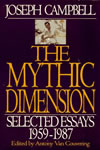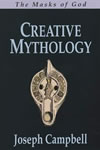These universal forms in mythology were consequently recognized by mainstream anthropologists; as Franz Boas expressed the view, ‘in the main the mental characteristics of man are the same all over the world,’ and, ‘certain patterns of associated ideas may be recognized in all types of culture.’ This sensible view was pushed aside after Emile Durkheim asserted that there must be fundamental differences between cultures. Campbell makes short work of Durkheim’s ‘muddle-headed’ influence, and laments ‘The entire culturalist movement in our contemporary Anglo-American anthropological literature is touched with this Durkheimian myopia.’ However, for some time the idea of a universal human psychological character was academic anathema.
Campbell documents the search for an origin of culture, in the fertile crescent or the Nile delta; and the intriguing similarities between Asian and pre-Columbian American cultures, along with the discovery of ancient Asian artifacts in the Americas. He returns to Bastian’s insight, however: despite evidence of cultural commerce ‘the mythological archetypes ... cut across the boundaries of these culture spheres and are not confined to any one or two, but are variously represented in all.’ He gives the example of the notion of life after death, which, as he says, is ‘about conterminous with the human species; so also that of the sacred area (sanctuary), that of the efficacy of ritual, of ceremonial decorations, sacrifice, and of magic, that of supernal agencies, that of transcendental yet ubiquitously immanent sacred power ... that of a relationship between dream and the mythological realm, that of initiation ... and so on, for pages.’
Campbell arrives at another of his essential — and highly significant — ideas: that poetry and art ‘are simply dead unless informed by Elementary Ideas ... as ... re-cognized [sic], vital factors of the subject’s own being.’ He laments the historian or anthropolgist who in the attempt at objectivity ‘is gelded of the organ that would have made it possible for him to distinguish his materials. He may note and classify circumstances, but can no more speak authoritatively of mythology than a man without taste buds of taste.’ This leads to the question ‘Is it then impossible to have a science of myth?’ In response, Campbell demonstrates the possibility of utilising Bastian’s principles to make a study of the ‘biological roots’ of myth.
Here Campbell enters the realm of dream, perhaps the most significant common feature of our species, and for each and every one of us a personal link to the fount of mythology, and to its meaning. He cites Géza Róheim’s statement that medicine-men are ‘the lightning conductors of common anxiety. They fight the demons so that others can hunt the prey and in general fight reality.’ And these shamans are the forerunners of the great sages of history.
This mysterious and ever-present origin of mythology, as Coomaraswamy wrote, ‘points to a spiritual unity of the human race already predetermined long before the discovery of metals. It may be really true that ... the various cultures of mankind are no more than the dialects of one and the same spiritual language.’
A science of mythology would have to take into account ‘the prodigious range of functions that mythology has served in the course of human history ... mythology is the picture language of metaphysics ... the womb of mankind’s initiation to life and death.’
Campbell now moves to the biological function of myth, where myth is seen as a part of the maturing process of the human — a creature thrust helpless from the womb, unable to care for itself for years. Róheim termed society a ‘second womb’ for postnatal development; something like a marsupial pouch. Through the rituals and initiations that develop from mythology we move through the seven ages that are our lot.
Campbell goes on to investigate the ‘image of a second birth’. He assures the reader that in the Indian tradition, ‘the objective is to be born from the womb of myth, not to remain in it.’ The idea of rebirth abides in the Christian rite of baptism, but this second birth is ‘read rather as being born into the Church than born out of it.’ This highlights an immensely significant difference between occidental and oriental traditions.
Folklore retains a map of the journey, even when the religious pundits of an age misread it. This concept is found in the teaching of Jesus, when he lambasted the priests, saying ‘You shut the door of the kingdom of Heaven in men’s faces; you do not enter yourselves, and when others are entering, you stop them.’ (Matthew 23:13)
In the closing part of this chapter, Campbell briefly discusses the ‘anxiety of the misborn’ — the neuroses and psychoses that arise when a culture rejects its own mythology. This is most evident when a culture shuts out living visionaries — the poets and artists who can reinvigorate the essential perceptions of a society (a theme explored in depth in Creative Mythology, the fourth volume of Campbell’s Masks of God).September 2004


